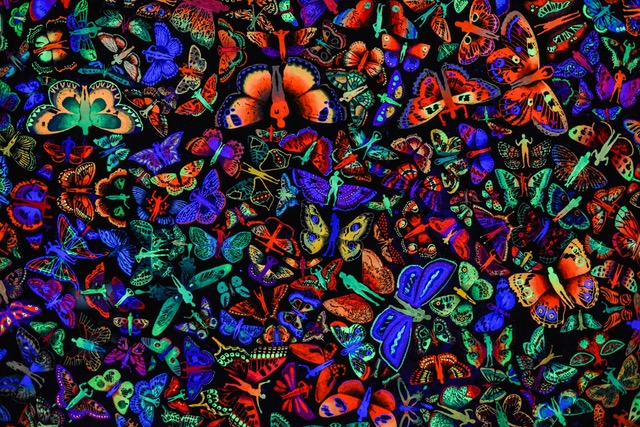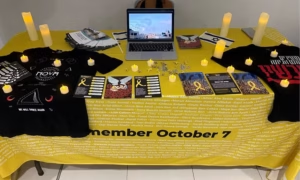Steve Kramer: Cooling it in Jerusalem
I have a down coat from LL Bean hanging in my closet. It just hangs there, waiting for an opportunity for me to wear it. Such an occasion occurred recently when we experienced the first (and probably last) cold day of the winter. If we were staying in Kfar Saba, as usual, it probably would have remained unworn in the closet. But we were going to Jerusalem for a few days with two other couples, celebrating the three wives’ birthdays. Jerusalem, 900 feet above Kfar Saba in elevation, has a real winter, albeit mild by Northeastern standards. So, we were relatively bundled up, but even so, the second day, we would have been more comfortable with our usual, lighter jackets.

As usual, we took the train to Jerusalem and then the light rail to our first destination, the recently renovated Tower of David Museum, adjacent to the Jaffa Gate in the Old City. The fortress, now a museum, has a historic background despite having no real connection to King David. “Now labeled as the capital’s official museum by City Hall, the citadel offers a gateway into the Old City and fresh, clever ways to digest the historical material and lore that make up Jerusalem’s chronicles and traditions. Technology and original artifacts coexist easily in this new and improved version, offering visitors a deep dive into the timeline of the citadel, which dates back to King Herod [c. 5 BCE], the early Muslims, and the Crusaders, all of whom used the fortress to safeguard the city while in power.” (https://www.timesofisrael.com/modern-and-ancient-coexist-in-50-million-tower-of-david-renovation/)
While we waited for our private English language guided tour to begin, we enjoyed a light brunch at the recently opened HaMigdal (Tower Cafe). It was delicious. We were surprised by the original items on offer, which were different than the usual fare at cafes in Israel. I enjoyed a bread-based combination of egg, cheese, and vegetables, served cold. It sounds similar to a quiche, but it wasn’t like anything that I’ve previously eaten. The five others in our group all enjoyed their own choices, accompanied by delicious coffee, which is always “made to order” in Israel.

Our guide led us all around the museum, but the emphasis was on the very special exhibit by the internationally known artist Zadok Ben-David. Born in Yemen in 1949, Ben-David’s family immigrated to Israel that same year. He graduated in Advanced Sculpture from St. Martin’s School of Art in London, where he also taught from 1977-1982. An award-winning artist, he is now based in London and Portugal but often works in Israel. Best known for his surprising sculptures, installations, and public artworks, Ben-David explores themes linked to human nature and evolution. Metal is Ben-David’s preferred material, but it is sometimes rough, which he often uses to create optical illusions. Ben-David first represented Israel at the Venice Biennale in 1988 and has participated in many other exhibitions and museums over the decades since.
On the Other Side, the star of Ben-David’s exhibit at the museum, bears comparison to the fabulous Chihuly in the Light of Jerusalem 2000 exhibit. Although differing from that blown-glass extravaganza, this one also takes over various locales in the museum, both inside and out. Some of the pieces will probably remain permanently. In a dimly-lit room is a dramatic, stainless steel, 2-dimensional circle, The other Side of Midnight with differing sides. On the front side are 2,000 hand-painted “butterflies” with human bodies. The back side, which is partially transparent, displays 2,000 brown “insects’, also humanoid. The disk appears globe-like when viewed from a distance and is, in my opinion, the ‘star’ of the exhibit. Also incorporating human figures are metallic “trees” Ben-David placed around the grounds, 3-D sculptural art works, and 3-D “paintings”. All in all, the exhibit leaves a strong impression of Ben-David’s oeuvre.

The renovation of the Tower of David shows off the great installations showcasing Jerusalem’s history through the ages, along with more universal themes, Jewish, Christian, and Muslim. Leaving the museum, which is adjacent to the Jaffa Gate of the Old City, we walked through the Mamilla St. arcade into the heart of Jerusalem. Our featured destination to celebrate the three birthdays was “afternoon tea” at the Waldorf-Astoria Hotel, just a short distance from storied King David St., on which the historic King David Hotel and YMCA are located.
Two of our friends are former Brits, very familiar with “tea” traditions. This hotel’s version passed muster with them and all of us for its excellent service and wide selection of petite, crustless sandwiches, luscious petit fours, scones with whipped cream and jams, and, of course, a large tea selection served in individual tea pots. The only criticism I have of this celebration was the discomfort of my chair, which I had already exchanged with little difference. Nobody else had the same complaint.
Afterwards, we walked along King David St., past beautiful Liberty Bell Park with its fabulous fountain, to the Orient Hotel. The hotel complex is located at the beginning of Emek Refaim St. in the German Colony neighborhood. This relatively new, luxurious hotel is comprised of interesting new construction with heritage buildings built more than 100 years ago by the German Templers. After resting, we spent a few hours in the comfortable lobby cafe, where we enjoyed a light supper and, of course, cocktails.
In the morning, Michal, another couple, and I enjoyed the sumptuous breakfast, which incorporated some unexpected items, such as vegan pizza. You can’t beat the Israeli hotel breakfasts, and this one is right up with the best. Michal and I decided to visit the Israel Museum before returning home. Unfortunately, we boarded the wrong bus! Finding ourselves the last people on the bus about 40 minutes later, we disembarked in an unfamiliar bus terminal in eastern Jerusalem. We and our female, head-scarfed driver alighted to be greeted by several surprised (by passengers alighting) Israeli-Arab Jerusalem residents. They quickly flagged down a passing taxi, which finally got us to the museum, located in a different part of town.
There we just missed an English language tour of a special exhibit which we briefly entered and left, judging that it was not our style at all. Instead, we walked through the Ethnography section, looking for ancient Persian Jewish items; there weren’t too many examples in evidence. Then we walked through the always interesting archeological division, again finding little connection to the Persian empire. Why the Persian/Iranian curiosity? Because we had scheduled ourselves to see the first lecture of a course on Jews in the Persian empire. Without any more unexpected changes to our schedule, we arrived at home in plenty of time.
Even in uncertain times, such as now, when we are encouraged by the return of Jewish hostages but are contemplating a return of our soldiers to Gaza to wipe out Hamas, we can always take a few days, travel a short distance, and change the mood for a while.
Pics by Steve: close up of butterflies, “human” trees, part of a courtyard scene, cactus












